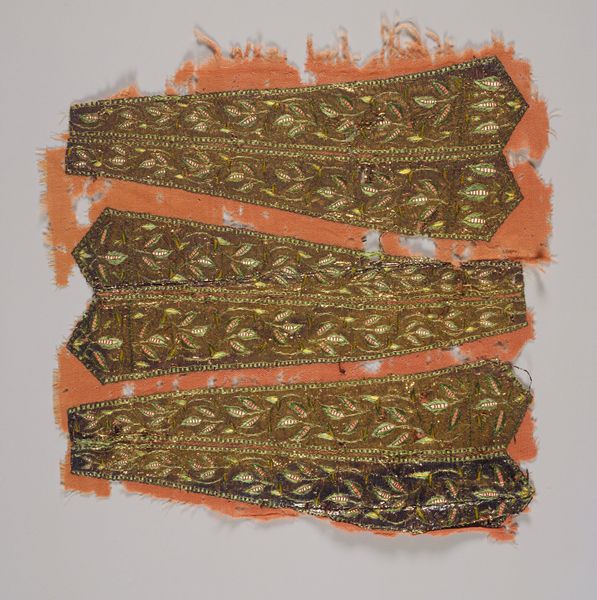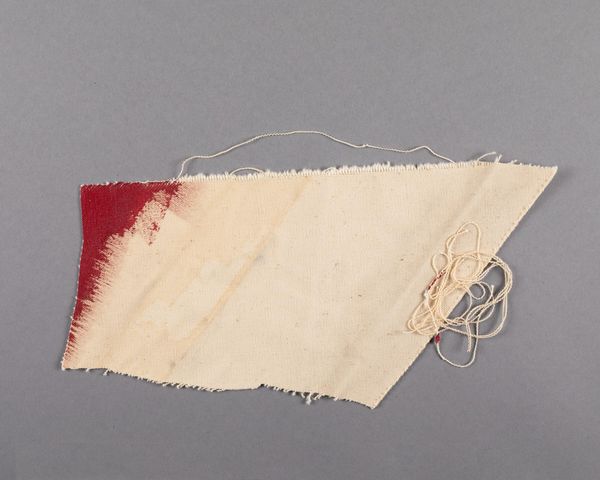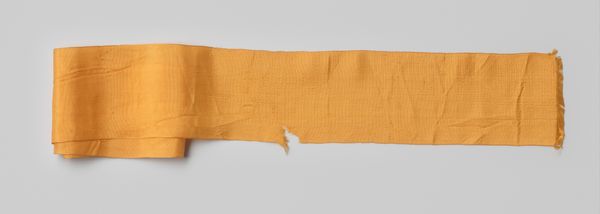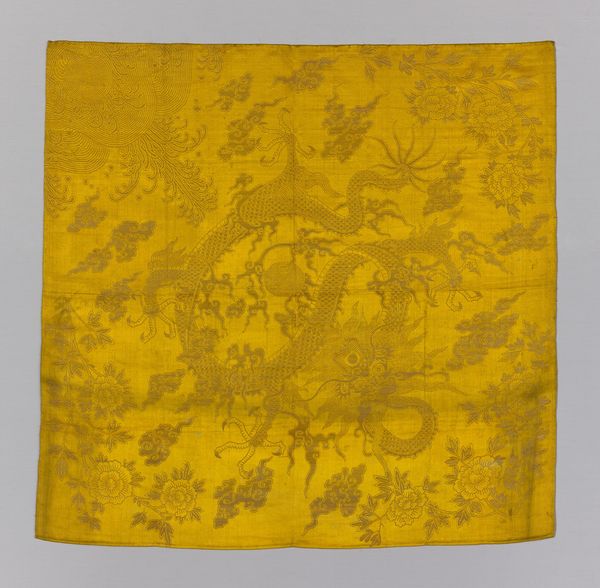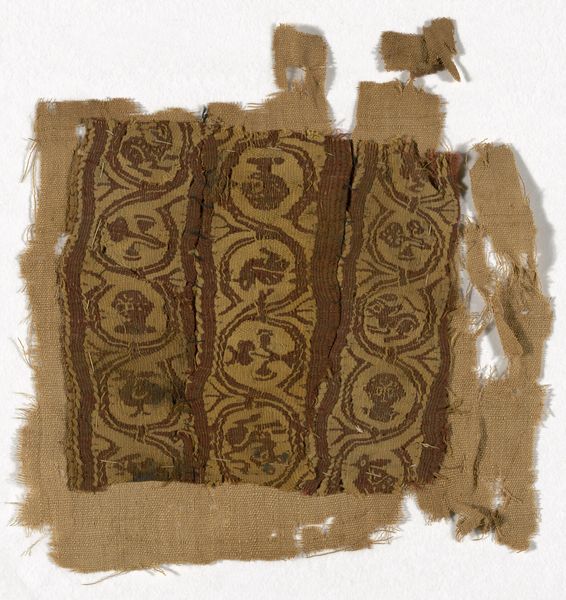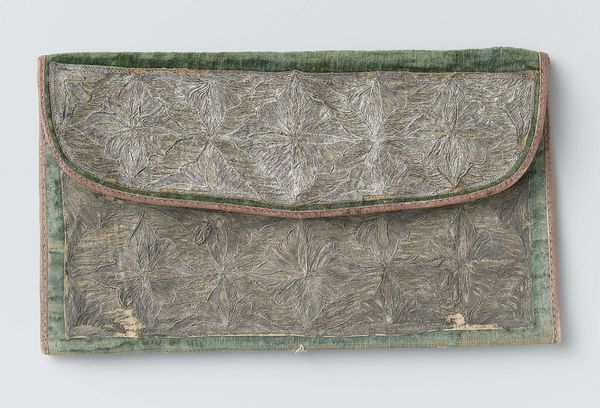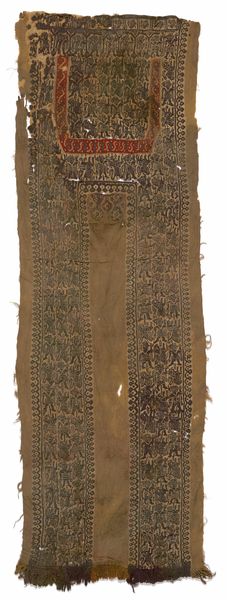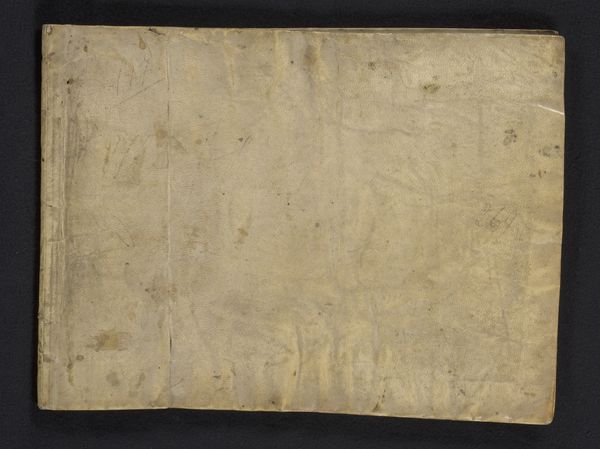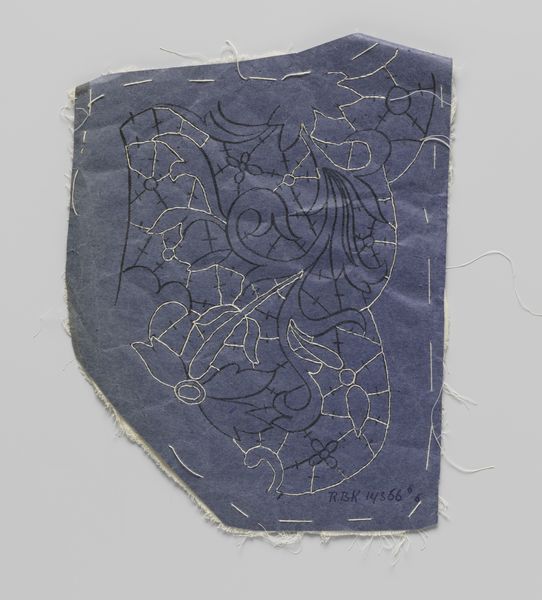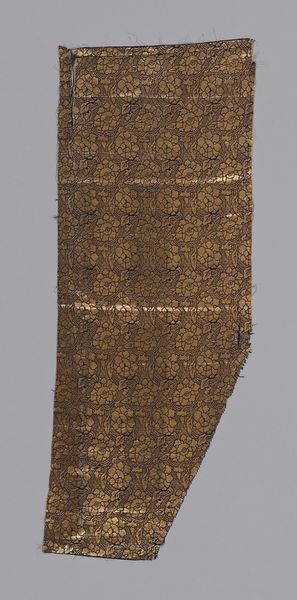
fibre-art, painting, textile, mural
#
fibre-art
#
painting
#
textile
#
history-painting
#
decorative-art
#
mural
Dimensions: height 90 cm, width 90 cm
Copyright: Rijks Museum: Open Domain
Editor: This is "Vaandel van het eerste afdeling infanterie," possibly from 1846, by Jan Willem Pieneman, currently at the Rijksmuseum. It’s a history painting created using textile, mural, and fiber-art techniques. What strikes me most is its fragility. How does its current condition affect its message? Curator: The deterioration is key. Banners are, by nature, public and often propagandistic. They project power, unity, and ideology. Here, the fragmentation undermines those qualities. We’re confronted with the ravages of time, suggesting perhaps that the ideologies the banner represented are themselves frayed and vulnerable. How does seeing it preserved in a museum alter your perception of its original purpose? Editor: That's interesting, I hadn’t thought about the museum itself as a filter. The banner, once displayed proudly, is now displayed as a historical object. Does the institutional setting change the narrative around it? Curator: Absolutely. Museums frame objects within specific historical narratives. By placing this banner within its collection, the Rijksmuseum asks us to consider the complexities of Dutch history. Is it a celebration of military prowess, or a sobering reminder of conflict? The museum's curation choices invite this reflection. Editor: So, it becomes less about the specific victory or regiment, and more about the broader historical context the museum provides. It makes me consider the role of museums in shaping collective memory. Curator: Precisely! Think about how museums have historically presented narratives of nationhood and patriotism, often privileging certain voices and perspectives. Questioning those presentations allows us to engage more critically with the past. What will it mean for audiences when history paintings start representing a greater spectrum of views and experience? Editor: I guess that opens up conversations about who gets to tell history, and whose stories are preserved and remembered. That is a very good question to consider, indeed. Curator: Indeed, and art like this makes those conversations possible and vital.
Comments
No comments
Be the first to comment and join the conversation on the ultimate creative platform.

